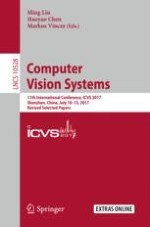2017 | Book
Computer Vision Systems
11th International Conference, ICVS 2017, Shenzhen, China, July 10-13, 2017, Revised Selected Papers
Editors: Ming Liu, Dr. Haoyao Chen, Prof. Dr. Markus Vincze
Publisher: Springer International Publishing
Book Series : Lecture Notes in Computer Science
